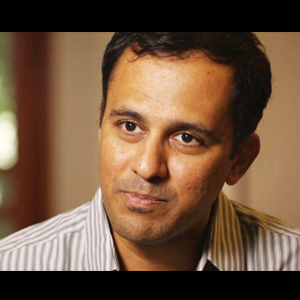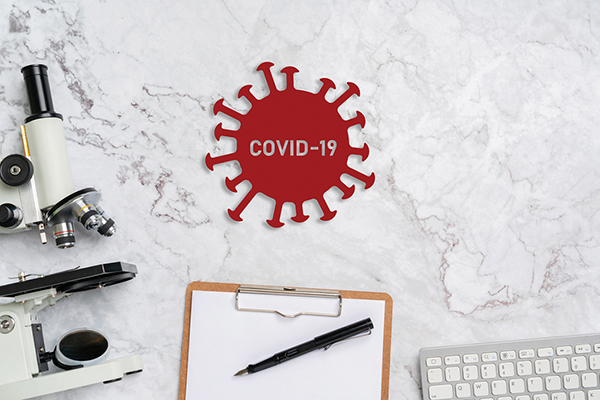Interview: Helping India, Breath by Breath

Dr. Ramanan Laxminarayan was at the World Affairs Council of Atlanta’s Global Health Summit to explain how his team of researchers, following the Covid crisis in India, galvanized hundreds of volunteers, donors and on-the-ground partners to tackle a critical shortage through a new coalition called Oxygen for India.
Dr. Laxminarayan has made a career of researching pressing global health issues. The Princeton University scholar specializes in studying microbial resistance to antibiotics, and for more than 25 years he has worked to ameliorate the growing threat by working internationally to improve product and drug design. He has served on a variety of national medical academies, boards and presidential commissions, including the Global Antibiotic Resistance Partnership and an international initiative to improve affordability of malarial medications.
In 2010, he founded the Center for Disease Dynamics, Economics and Policy, a binational think tank that produces research to inform health policy in Washington, D.C. and Delhi. During the pandemic, his team began covering its effects in India and Africa, providing epidemiological insights on a fast-changing landscape. But it quickly became clear that they could no longer remain passive observers, especially as Dr. Laxminarayan’s home country experienced a massive spike in cases and related deaths that could have been easily prevented through the distribution of a commodity many hospitals in the developed world take for granted: medical oxygen.
How did you go from running a think tank to a nonprofit tackling a huge problem in the country?
Well, I’m a researcher, and we’ve been covering Covid a lot in terms of epidemiology. We had papers in Science and The Lancet and so forth. But I never really expected that we’d have to go out and deal with actual challenges from Covid directly, which happened because of the oxygen crisis. And it’s not just me—my entire team had to sort of pivot to go and solve the problem of people not having enough access to oxygen. Thankfully, that need has come down a bit, and people are now back at their research roles. But it is kind of alarming that a system was not prepared at all for such a terrible crisis, and that researchers had to step in to fulfill a role that really should have been done by the health system.
At the conference in Atlanta, you talked about the prospect of an unseen crisis in India’s rural areas. Could it be that the pandemic is still just as persistent now but is just less documented than when it was sweeping major cities?
I think that’s always going to be the case. Because testing is so much lower in rural India, we’re not going to see the sheer number of cases that you see in urban India. In fact, even across India, the more urbanized states are the ones that have seen far more reported infections.
How has that dispersal of disease prevalence and demand affected your ability to get oxygen to people who need it?
It has made it more challenging, which means we are sending out cylinders and concentrators out to pretty remote areas, and it has increased our cost of transportation. But I think we’re making a big difference in places where, even during normal times, there’s no oxygen. So we’re really happy to be able to make that difference now.
 “Covid cases have come down, but they still are lingering around 40,000 reported cases a day, which is still incredibly high,” says Dr. Lakshminarayan, giving an update. “And you have to remember that the peak last year was 90,000 cases a day. So we’re not that far from that peak, even though we’re far below this year’s peak.”
“Covid cases have come down, but they still are lingering around 40,000 reported cases a day, which is still incredibly high,” says Dr. Lakshminarayan, giving an update. “And you have to remember that the peak last year was 90,000 cases a day. So we’re not that far from that peak, even though we’re far below this year’s peak.”
What are the mechanics of how you are fielding inquiries and distributing the oxygen? This is a logistical challenge, and I know you’ve created a web of partnerships, but how have you solved the issues that have stymied other efforts to get oxygen around the country?
There are literally hundreds of people working on this in a completely decentralized fashion. There are some people who try to figure out where the demand is and other people working to figure out who the reliable partners to work with in those places, as well as others working on the financial paperwork, and then some people work on logistics, to make sure the cylinders and concentrators get out. So it’s really a mammoth operation involving many people, and it’s all volunteer-driven. That’s what makes the whole thing so useful and exciting.
What has this revealed to you about the civil society in India and how it can either be utilized or strengthened?
I think the nonprofit sector in India has definitely mobilized. The nonprofit sector is highly dependent on corporate social responsibility funds. And last year, many of the CSR funds were corralled by the government for the PM Cares effort, and so there was no money left for [non-governmental organizations]. But this year, they managed to get some monies together to be able to address issues like lost livelihoods and hunger and nutrition. I mean, something like 240 million Indians have gone into poverty in the last year and a half because of Covid. So the consequences of Covid go far beyond the disease. They’re economic, they’re health, they’re just in terms of morale and livelihood. There’s a role for many, many people and organizations well beyond immediately solving problems like oxygen, which are important for survival perspective in an immediate sense. But much more needs to happen.
You’ve had a lot of support from the Indian diaspora. That seems intuitive given there are so many Indian-American physicians. How can we build on this in the future, to drive more partnerships between the U.S. and India in the health sphere?
The U.S. and India share a lot in common apart from their people, with very similar sorts of health systems that are largely privately supported and funded. There’s shared interest in terms of new technologies—digital health and so forth—where transformations in India have the potential to be transformational in the U.S. as well. And I think it’s in that innovation space that there’s probably a lot of room for cooperation.
You’ve talked about medical oxygen as a table stakes discussion in health care, but you’ve also done a lot of research on microbial resistance and other issues. So is it oxygen over these things? Or is it oxygen in tandem with solving these other challenges?
It’s oxygen in tandem with these other challenges, which are always going to be variable over time. We have fungal pathogens as a problem. We have secondary bacterial infections as a problem. And we’ve got oxygen as well. But the oxygen one is just heart-wrenching, because it’s such a cheap intervention. And there’s just something very elemental and primal about people not being able to breathe and dying because they couldn’t breathe. That just seems like a completely unacceptable way for people to suffer and die, and we need to fix that.
A versatile digital journalist, Trevor Williams has spent more than a decade writing on international business and trade for Global Atlanta, an online news service covering Atlanta’s intersection with the global economy. He has undertaken journalism trips to 30+ countries on five continents, uncovering stories that reveal both the perils and promise of globalization and its ramifications for his home state.
Enjoyed reading Khabar magazine? Subscribe to Khabar and get a full digital copy of this Indian-American community magazine.
blog comments powered by Disqus












